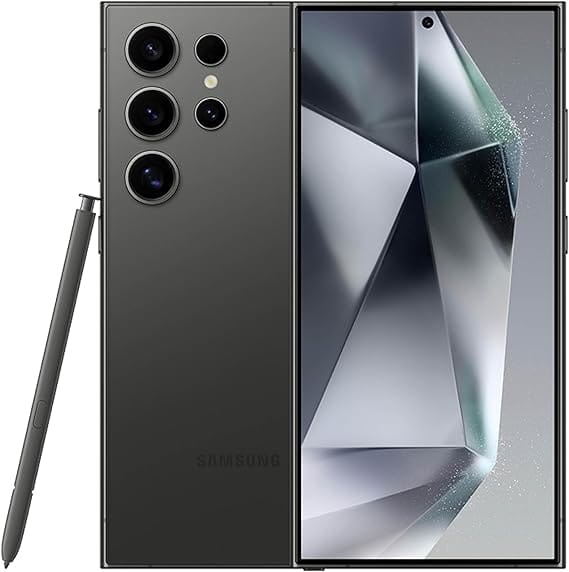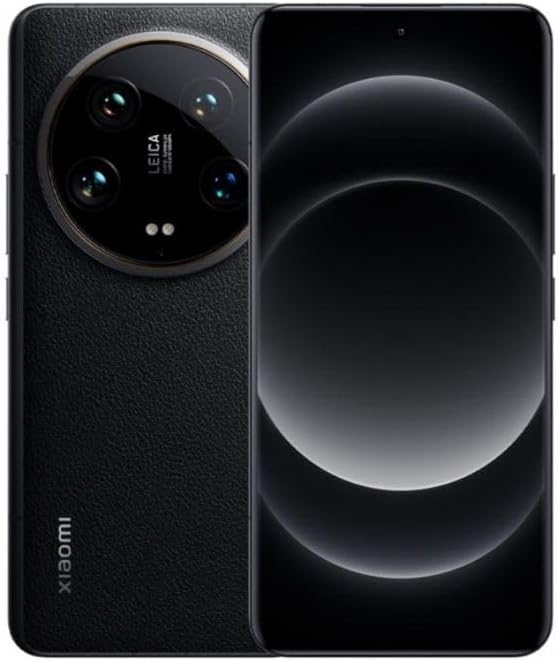Introduction: Mobile Trends: Shaping the Future of Technology
The mobile technology landscape has transformed dramatically over the past few decades, evolving from simple cellular devices to multifaceted smartphones and advanced wearable gadgets. Today, mobile trends define the trajectory of global innovation, influencing industries, consumer behavior, and technological advancements. This document delves into the key mobile trends shaping the present and future, encompassing advancements in hardware, software, connectivity, and their broader implications.
Samsung Galaxy S24 Ultra Cell Phone, 512GB AI Smartphone > Buy from Amazon

Historical Evolution of Mobile Technology
Mobile technology has undergone an extraordinary evolution:
- 1G to 5G Connectivity:
- 1G (1980s): The era of analog voice communication introduced basic mobile phones with limited functionality.
- 2G (1990s): Digital communication brought SMS and better call quality.
- 3G (2000s): High-speed internet access revolutionized mobile browsing.
- 4G (2010s): Enhanced video streaming and app ecosystems flourished.
- 5G (2020s): Ultra-low latency and high-speed connectivity pave the way for innovations like IoT and AR/VR.
- Device Form Factor: From bulky, brick-like devices to sleek, foldable smartphones, mobile design has continually evolved to balance functionality and aesthetics. The rise of bezel-less screens and advanced materials further underscores this progression.
- Operating Systems: Early mobile operating systems like Symbian and BlackBerry OS gave way to modern platforms like Android and iOS, which dominate the market today with their extensive ecosystems and app support.
Kryptall 15 Pro Max Unlocked Cellular Phone Encrypted Secure Mobile Cellphone > Buy from Amazon

Emerging Mobile Trends
- 5G and Beyond
- 5G Deployment: Revolutionizing connectivity with lightning-fast speeds and minimal latency, enabling real-time applications such as autonomous vehicles and smart cities.
- 6G Research: While 5G is still in its infancy, preliminary discussions around 6G envision even greater data rates and immersive experiences.
- Foldable and Flexible Displays
- Devices like the Samsung Galaxy Z Fold and Huawei Mate Xs showcase the potential of foldable technology, merging the tablet and smartphone experience.
- Advancements in materials science are enabling more durable and versatile flexible displays.
- Artificial Intelligence and Machine Learning
- AI-powered features such as voice assistants (Siri, Google Assistant) and image recognition are becoming standard.
- Machine learning enhances user experiences by personalizing app functionality, predicting usage patterns, and optimizing battery life.
HUAWEI Mate Xs 5G EU/UK Model Dual Sim [ NO Google Services ] Global ROM – Interstellar Blue > Buy from Amazon

- Augmented Reality (AR) and Virtual Reality (VR)
- Mobile AR: Apps like Snapchat and Instagram use AR to create engaging filters, while platforms like IKEA Place allow users to visualize furniture in their homes.
- Mobile VR: Though less prevalent, innovations in VR headsets like the Oculus Quest 2 hint at mobile-integrated VR applications in gaming and education.
- Wearable Integration
- Wearables like smartwatches and fitness bands are seamlessly integrating with smartphones to provide health tracking, notifications, and IoT controls.
- Innovations in bio-sensing technology (e.g., glucose monitoring) are expanding wearables’ capabilities.
- Mobile Payments and Fintech Integration
Xiaomi 14 Ultra 5G (512GB + 16GB) Global Version > Buy from Amazon

- Mobile Gaming
- Mobile games generate billions in revenue, driven by titles like PUBG Mobile, Call of Duty: Mobile, and Genshin Impact.
- Cloud gaming services like Xbox Cloud Gaming and NVIDIA GeForce NOW are making high-quality games accessible on mobile devices.
- Environmental Sustainability
- Brands are adopting eco-friendly practices, such as using recycled materials in device manufacturing and reducing packaging waste.
- Initiatives like longer software support lifecycles and repairable designs promote sustainability.
- Health and Wellness Apps
- Mobile apps like Calm and MyFitnessPal cater to mental and physical health.
- COVID-19 accelerated the adoption of telemedicine and mobile diagnostics, with platforms like Teladoc Health leading the charge.
- IoT and Smart Home Connectivity
- Smartphones serve as hubs for IoT devices, enabling seamless control of smart thermostats, lights, and security systems.
- Standards like Matter aim to enhance compatibility among diverse IoT ecosystems.
Regional Mobile Trends
- Asia-Pacific:
- Leading in 5G adoption and mobile-first strategies.
- E-commerce apps like Shopee and WeChat dominate the market.
- North America:
- Strong focus on AR/VR innovations and streaming services.
- High penetration of premium smartphones and wearables.
- Europe:
- Sustainability is a key focus, with regulations promoting eco-friendly practices.
- Increasing adoption of open banking via mobile platforms.
- Africa and the Middle East:
- Mobile phones drive financial inclusion through services like M-Pesa.
- Rapid growth in affordable smartphone adoption.
- Latin America:
- Mobile gaming and social media usage are major drivers.
- Growth in fintech apps for remittances and digital payments.
Challenges in Mobile Technology
- Security and Privacy:
- Rising concerns over data breaches and app vulnerabilities necessitate robust security measures.
- Privacy regulations like GDPR are shaping app development and data handling.
- E-Waste Management:
- The rapid turnover of mobile devices contributes to growing e-waste.
- Recycling programs and modular designs can mitigate this issue.
- Digital Divide:
- Access to mobile technology remains uneven across regions, highlighting the need for affordable connectivity solutions.
- Battery Technology:
- Despite advancements, battery life remains a limiting factor for many users.
- Innovations like solid-state batteries and wireless charging are being explored.
Future Directions
- Edge Computing:
- Bringing data processing closer to the source (e.g., smartphones) reduces latency and enhances performance for real-time applications.
- Personalized Experiences:
- AI-driven personalization will further tailor apps and devices to individual preferences and needs.
- Quantum Computing:
- Though in its infancy, quantum computing may eventually influence mobile encryption and data analysis capabilities.
- Space-Based Connectivity:
- Satellite internet projects like Starlink aim to provide global coverage, reducing the digital divide.
- Advanced Biometrics:
- Biometric authentication, including facial recognition and voice patterns, will become more secure and widespread.
Mobile phones, often referred to as cell phones, have transformed from mere communication devices to essential tools that integrate seamlessly into modern life. Over the past few decades, their evolution has been marked by remarkable technological advancements and profound changes in how people connect, work, and entertain themselves. This comprehensive exploration delves into the history, development, features, uses, and future trends of mobile phones, providing a thorough understanding of their significance in the contemporary world.
The History of Mobile Phones
The journey of mobile phones began with a vision of untethered communication. The first handheld mobile phone, the Motorola DynaTAC 8000X, was introduced in 1983. It was bulky, expensive, and had limited functionality, but it laid the foundation for mobile communication. Over time, technological innovations made mobile phones smaller, more affordable, and feature-rich.
The second generation (2G) era in the 1990s introduced digital technology, replacing analog systems. This enabled better sound quality, text messaging (SMS), and basic internet access. By the early 2000s, mobile phones had color screens, cameras, and support for multimedia messaging (MMS). The launch of the iPhone in 2007 marked the dawn of the smartphone era, redefining what a mobile phone could do by integrating a touchscreen interface, internet browsing, and a robust ecosystem of applications.
Key Features of Mobile Phones
Modern mobile phones boast a plethora of features that cater to various needs:
- Communication Tools: Beyond voice calls, mobile phones support video calls, text messaging, and instant messaging apps like WhatsApp and Telegram.
- Internet Connectivity: High-speed 4G and 5G networks enable seamless browsing, streaming, and downloading.
- Cameras: Smartphones often feature multiple cameras with advanced technologies like optical zoom, AI-enhanced photography, and 4K video recording.
- Applications: App stores offer millions of applications for productivity, entertainment, education, and more.
- Sensors and Biometric Security: Features like fingerprint scanners, facial recognition, and accelerometers enhance functionality and security.
- Battery and Charging: Innovations like fast charging, wireless charging, and long-lasting batteries have improved user convenience.
- Multimedia and Gaming: High-resolution displays, powerful processors, and dedicated GPUs make phones ideal for gaming and media consumption.
The Impact of Mobile Phones on Society
Mobile phones have reshaped human interaction, productivity, and leisure. Here are some notable impacts:
- Communication: They have bridged geographical gaps, enabling instant communication across the globe.
- Economic Empowerment: Mobile technology has facilitated mobile banking, e-commerce, and remote work, boosting economic opportunities.
- Education: Online learning platforms and educational apps have made knowledge accessible to a broader audience.
- Healthcare: Mobile health apps and telemedicine services enhance healthcare delivery and monitoring.
- Social Dynamics: Social media platforms accessible via mobile phones have transformed how people connect, share, and interact.
Challenges and Concerns
While mobile phones offer numerous benefits, they also present challenges:
- Privacy and Security: Issues like data breaches, surveillance, and cyber threats pose risks to users.
- Health Concerns: Excessive screen time and radiation exposure have raised concerns about their impact on physical and mental health.
- Digital Divide: Despite widespread adoption, access to mobile technology remains unequal, particularly in developing regions.
- Environmental Impact: E-waste generated by discarded phones and the extraction of rare earth metals for their production are significant environmental concerns.
The Future of Mobile Phones
The future of mobile phones is exciting and full of possibilities:
- Foldable and Flexible Displays: These innovations promise to make phones more versatile and portable.
- Artificial Intelligence: AI will enhance personalization, voice assistants, and camera functionalities.
- Augmented and Virtual Reality: Integration of AR and VR technologies will open new avenues for gaming, education, and work.
- Sustainable Practices: Eco-friendly designs and recyclable materials will address environmental concerns.
- Improved Connectivity: The rollout of 5G and beyond will support faster and more reliable connections, enabling innovations like smart cities and autonomous vehicles.
8 Game-Changing Smartphone Trends That Will Define 2025
As in just about every other field of technology, AI will undoubtedly continue to be the key driver of innovation throughout 2025.
Increasingly, it will also become the channel through which handset manufacturers will seek to differentiate their offerings in what has undeniably become a somewhat homogenous market.
However, breakthroughs in screen technology, battery and form factor will continue to push our ever-present electronic companions into new territory.
So let’s take a look at the key trends shaping the world of smartphone technology over the coming 12 months.
LLM-Powered Voice Assistants
Perhaps the most transformational application of AI within the smartphone ecosystem this year will be the ongoing addition of LLM functionality to AI assistants, as we’ve seen this year with the addition of Apple Intelligence to Siri and the merging of Google’s Gemini with Android.
This means we can expect the conversational abilities of our phones to become more natural and human-like, particularly as we see elements of technology such as ChatGPT’s Advanced Voice Mode begin to creep into smartphones.
AI-Powered User Experience
Aside from LLM-powered voice functions, we will continue to see AI improving user experience in more subtle ways, such as prolonging battery life, optimizing storage and enhancing camera functionality. As developers and manufacturers look for innovative ways to improve UX, I anticipate that we will see a move towards more predictive use cases as devices become capable of anticipating user behaviors and intuitively allocating resources in a more personalized way.
Privacy And Security
As our phones become capable of knowing more about us through their scanners and sensors and become more essential to our lives, the importance of keeping them secure increases.
This year, we’ve seen innovations such as theft detection ability, which is capable of automatically securing a device when it rapidly moves away from its owner. We can expect to see continued development of features, leveraging encryption, biometrics, and on-device AI, designed to protect the valuable data they hold.
Not-So-Smart Phones
As the subset of phone users suffering from “feature fatigue” grows, I expect we will see continued interest in the niche but growing field of basic “dumb” phones. These minimalist devices are designed to reduce the impact on users’ lives of the many distracting influences of feature-rich phones. Or just provide a secure device that won’t mean the owner’s life effectively disappears when the handset is lost or stolen!
The Future of the Smartphone: 10 Innovations in Shape, Design and Technology
The Future of the Smartphone: 10 Innovations in Shape, Design and Technology
I sit here innocently with my Smartphone in my hands as if it were something completely natural. But suddenly I get a strange feeling. Where did that thing come from? And where is it going? And why can no one actually do without this Smartphone anymore?
The smartphone industry is evolving at a rapid pace, with technological innovations constantly changing the design and functionality of smartphones. In the coming years, we can expect to see a variety of new trends, from foldable displays and invisible cameras to sustainable materials.
These developments will not only affect the performance, but also the shape, appearance and user experience of the smartphone. Discover how smartphones will change in the coming years and what innovations await us.
The origin of the smartphone
It seems to have come out of nowhere, but it took years of development.
The smartphone as we know it today is the result of a long evolution of mobile technologies that began in the late 90s and early 2000s. Here is a look at the origins and development of the smartphone:Smartphone deals
- First mobile phones (1980s-1990s).
- The rise of Personal Digital Assistants (PDAs) (1990s).
- First steps towards the smartphone.
- Nokia and BlackBerry: The early smartphones (2000s).
- The breakthrough with the iPhone (2007).
- The Growth of Android (2008).
- App revolution and innovation (2010s).
The first real smartphone is often attributed to IBM with their IBM Simon Personal Communicator, released in 1994. The real breakthrough for smartphones came in 2007 with the introduction of the iPhone by Apple.
What made the iPhone revolutionary was not just its design – a full touchscreen with no physical keyboard – but also its intuitive interface and the ability to to (un)install third-party smartphone appsThe iPhone transformed smartphones from business tools to mass-market consumer products.
Shortly after the launch of the iPhone, Google released the Android operating system out, which quickly became the dominant mobile platform worldwide. The first Android device, the HTC Dream (also known as the T-Mobile G1), was released in 2008.
After Apple introduced the App Store in 2008 and Android introduced Google Play, a huge market for mobile apps emerged. This changed the way smartphones were used, with applications for everything from entertainment and social media to productivity and health.Smartphone deals
The Smartphone Today
Smartphones today come with more advanced features such as:
Fast processors and excellent cameras.
GPS navigation.
Wireless Internet (Bluetooth, Wi-Fi en 4G).
Fingerprint scanners and facial recognition.
AI assistants like Siri and Google Assistant.
OLED TECHNOLOGY
An organic light-emitting diode (OLED), also known as organic electroluminescent (organic EL) diode,[1][2] is a type of light-emitting diode (LED) in which the emissive electroluminescent layer is an organic compound film that emits light in response to an electric current.
This organic layer is situated between two electrodes; typically, at least one of these electrodes is transparent.
OLEDs are used to create digital displays in devices such as television screens, computer monitors, and portable systems such as smartphones and handheld game consoles.
A major area of research is the development of white OLED devices for use in solid-state lighting applications.
There are two main families of OLED: those based on small molecules and those employing polymers. Adding mobile ions to an OLED creates a light-emitting electrochemical cell (LEC) which has a slightly different mode of operation.
An OLED display can be driven with a passive-matrix (PMOLED) or active-matrix (AMOLED) control scheme. In the PMOLED scheme, each row and line in the display is controlled sequentially, one by one, whereas AMOLED control uses a thin-film transistor (TFT) backplane to directly access and switch each individual pixel on or off, allowing for higher resolution and larger display sizes.
OLEDs are fundamentally different from LEDs, which are based on a p-n diode crystalline solid structure. In LEDs, doping is used to create p- and n-regions by changing the conductivity of the host semiconductor. OLEDs do not employ a crystalline p-n structure.
Doping of OLEDs is used to increase radiative efficiency by direct modification of the quantum-mechanical optical recombination rate. Doping is additionally used to determine the wavelength of photon emission.
OLED displays are made in a similar way to LCDs, including manufacturing of several displays on a mother substrate that is later thinned and cut into several displays.

